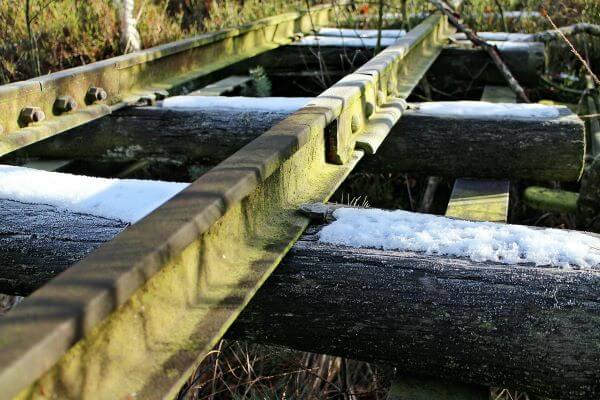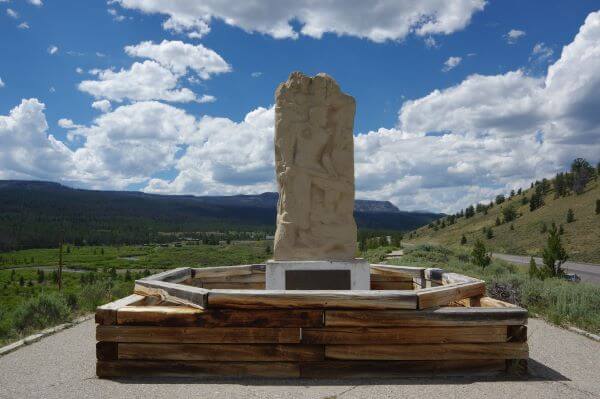Did you know that the rugged landscapes of Wyoming played a pivotal role in shaping North America’s logging industry? Enter the world of Wyoming tie hacks, a group of hardworking individuals who left an indelible mark on history.
These skilled craftsmen were responsible for cutting ties, which were crucial components used in railroad construction during the late 19th and early 20th centuries. Their tireless efforts not only fueled the growth of the railroad system across America but also had a profound cultural and economic impact on Wyoming.
In fact, as World War I approached, their contributions became even more significant, supplying materials essential for transporting troops and supplies.
Join The Working Forest as we delve into the fascinating world of Wyoming tie hacks, exploring their pivotal role in American history while unraveling their enduring legacy within Wyoming’s cultural fabric.

The Tie Hack Era
The tie hack era refers to the period from 1867 to 1952 when timber was cut to produce railroad ties. This era was driven by the need for a large number of railroad ties for the construction of the transcontinental railroad.
Tie hacking, or cutting timber for ties, took place in various locations, with the Bridger-Teton National Forest in Wyoming being one of the key areas.
The tie hack activities in the Bridger-Teton began in 1867 along the upper Green River.
Charles Delony contracted with the Union Pacific Railroad to supply ties to the railhead in Green River City. He established a camp on the banks of the Green River and hired 30 men to cut ties during the winter.
These ties were skidded down to the river and floated downstream to be caught in a boom built by Delony. This operation continued until 1869 when the railroad construction was completed.
The Tie Drive Process
The arduous and perilous journey of transporting wooden ties from Wyoming’s mountainous forests to the railroads required a combination of manual labor, engineering ingenuity, and teamwork. This process was not without its challenges and dangers!
-
Treacherous River Conditions: Navigating the rivers with loaded ties posed significant risks, including encountering rocks, sandbars, and cottonwood snags.
-
Physical Demands: Tie hacks had to work long hours, typically nine hours a day, lifting and carrying heavy ties, often ankle-deep in silt or in treacherous whirlpools.
-
Potential Accidents: There were instances of workers getting injured, such as one worker’s boot getting pinned to a tie, or even facing the threat of drowning.
-
Environmental Hazards: Tie drives faced natural obstacles like jams in Fish Canyon, which required a special crew to break them up and keep the ties flowing.
A Day in the Life Of Tie Hack Camps
Living conditions in tie hack camps were far from easy. Isolated cabins nestled deep within the woods provided shelter for the tie hacks, who worked tirelessly to harvest timber for the booming industry. These camps, often located near cottonwood creeks or within remote villages, formed tight-knit communities where camaraderie and resilience thrived.
Life revolved around the daily routines of work, school, and hack activities. These tie hacks would work long hours, ten hours a day for six days a week, manually felling trees and shaping them into railroad ties using a broadaxe.
This laborious and challenging work took place during the winter season, with freezing temperatures and several feet of snow covering the ground.
They relied on skiing and snowshoeing to move between work camps and obtain supplies from the camp commissary.
The camps became vibrant communities where individuals forged lasting friendships and simple joys that made life in these remote logging communities truly remarkable.

How Did Tie Hacks Make Money?
The tie hacks were compensated based on the number of ties they produced. These ties were then transported to nearby streams and stockpiled throughout the winter.
When the spring thaw arrived and water levels rose, the ties were released and floated downstream to the Green River, eventually covering a distance of 100 miles to reach the town of Green River, located west of Rock Springs.
At the turn of the century, over ten million ties were extracted from the forests of western Wyoming. However, this era came to an end in the early 1940s.
The Tie Hack Hotspots
Tie hacking along the upper Green River took off in 1895 when the Green River Lumber and Tie Company was established. This company operated along the Green River until 1904, fulfilling orders from the Union Pacific.
Several tie hack cabins can still be found in the upper Green River area, particularly in the Klondike Hill and Red Hills areas.
The Hams Fork area was also a site of tie hack operations, as well as the production of mine props for coal mines in the Kemmerer area.
The Oregon Short Line railroad was built through Kemmerer in 1881, and evidence of tie cuttings along the Hams Fork River suggests that ties were floated downstream for this railway.
The Standard Timber Company began operations in the Forest west of Big Piney in 1919, producing hewn ties, saw lumber, and mine props.
Tie hack villages, such as Johnson City on North Cottonwood Creek, were established, but most of these villages no longer exist. Isolated cabins can still be found throughout the Forest, including along South Cottonwood Creek, Ole Creek, and Nylander Creek.
The tie hacking operations gradually moved north into the Horse Creek area in the 1920s and 1930s. Villages and cabins were constructed in areas such as North and South Horse Creek, Pass Creek, Elk Creek, and Mill Creek.
The largest village was at the mouth of Mill Creek, which was occupied by over 300 families.
Timber operations also extended into the LaBarge Creek drainage in 1937, with a major tie hack village established on the banks of South LaBarge Creek. Although no structures remain from this village, scattered debris marks its location.
Reflections

The Tie Hack Monument stands as a tribute to the remarkable craftsmanship and enduring legacy of Wyoming’s tie hacks. Through their unparalleled skills and techniques, these logging legends shaped the growth of the state’s railroad industry. The tie hacks’ dedication to their craft is evident in every railroad tie they crafted, showcasing their artistry and expertise.
Visiting the Tie Hack Monument offers an opportunity to pay homage to these unsung heroes and gain insight into their extraordinary lives.
So why not plan a trip today? Experience firsthand the amazing workmanship that went into each railroad tie and immerse yourself in the fascinating stories from this bygone era. Let us continue to honor Wyoming’s logging legends by preserving their legacy for generations to come.
FAQs
How long did it take for a tie hack to craft a single railroad tie?
Crafting a single railroad tie required significant time and effort, typically taking around 8-10 hours depending on various factors such as experience level and wood availability.
Were there any safety risks involved in working as a tie hack?
Yes, tie hacks faced various safety risks in their line of work. Working with sharp tools and heavy logs posed potential dangers, and accidents were not uncommon in the logging camps.
What types of wood were commonly used for crafting railroad ties in Wyoming?
Lodgepole pine and Engelmann spruce were the most frequently used woods for crafting railroad ties due to their strength and durability.
How many railroad ties did a tie hack produce on average?
On average, a skilled tie hack could produce around 20-30 railroad ties per day, depending on factors such as wood quality, weather conditions, and personal skill level.
Are there any tie hack artifacts on display at the Tie Hack Monument?
Yes, the Tie Hack Monument features a collection of artifacts that provide insights into the lives of tie hacks, including tools they used and photographs from the era.
